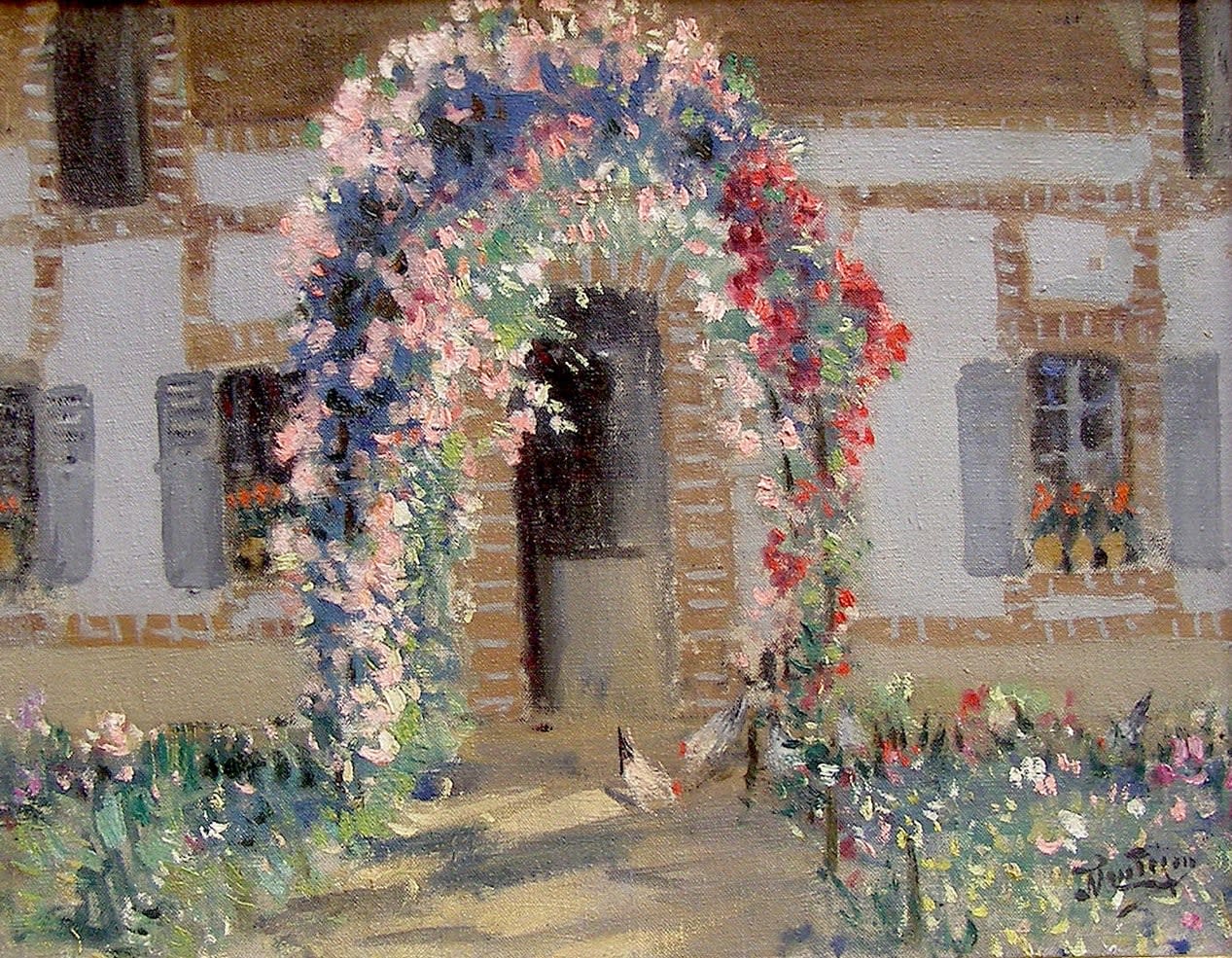artist
Pierre Eugène Montézin was aligned with the second wave of Impressionist artists and is part of the French Post-Impressionist movement. He painted landscapes, still lifes, village and rural scenes by largely applying the ideals of such artists as Claude Monet and Alfred Sisley. The son of a lace designer in Paris, he was encouraged at an early age to follow in his father's footsteps. He enrolled in the atelier of a decorator and was well on his way to achieving a successful career in decorative mural painting when he became influenced by the Impressionist movement. Traveling in rather exalted artistic circles, his interest in painting on canvas and in an Impressionist manner was soon whetted. Montézin subsequently decided to abandon a career as a mural painter and instead to concentrate on painting landscapes outside or "en plein air" in the tradition of these Impressionists.
Montézin entered his first Salon exhibition in 1903 after having persevered through a number of rejections of his work by the Salon committee. Eventually he came to know Ernest Quost (1844-1931) who encouraged Montezin to work diligently at his art and to concentrate on perfecting his drawing skills. Quost additionally gave Montézin a true appreciation for the fine art of painting. This informal mentoring and tutoring would later serve Montézin well. The Salon des Artistes Français awarded him a third place medal in 1907 and a second class medal in 1910. Success had at last come to the largely self-taught artist.
In 1914 with the outbreak of World War I Montézin enlisted in the Army. After the war Montezin resumed his painting in the quiet villages of Dreaux and Moret where he painted a number of landscapes in the tradition of Alfred Sisley. However, by far the strongest influence on Montézin's work was the iconic Impressionist painter Claude Monet. In 1920 Montézin was awarded the Rosa Bonheur Prize by the Société des Artistes Français. A number of academic and national honorary awards quickly followed. In 1923 the French Government bestowed the title of Chevalier de la Legion d'Honneur upon Montézin. Next the Académie named Montézin a member of the august Comité and made him a member of the Jury of the Artistes Français. In 1940 Montezin was appointed to succeed and to occupy the academic chair named after Edouard Vuillard (1868-1940). Unfortunately Montézin's life was cut short. He died suddenly and unexpectedly while painting in Brittany in 1946. Until the end of his life and throughout his entire career Montézin closely adhered to and followed the precepts of true Impressionism and its accompanying principles. He never permitted the newer emerging artistic movements of Cubism, Surrealism or Abstract Art to influence his art.
provenance
Private Collection, France
*This painting is accompanied by a certificate of authenticity by Cyril Klein-Montezin







